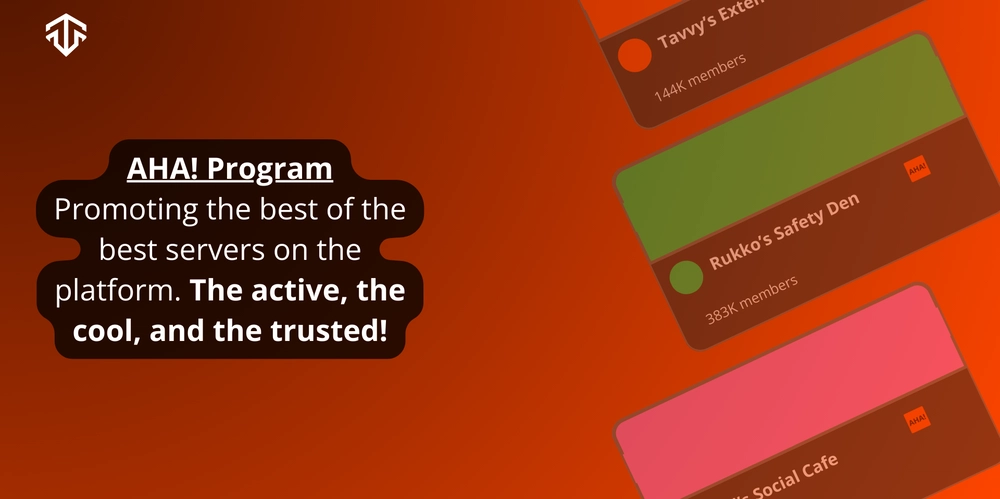Open Source Licensing in Cyber Defense: Navigating Legal and Technical Challenges
Abstract: This post explores how open source licensing shapes modern cyber defense strategies. We examine the history and evolution of open source software (OSS) in cybersecurity, review the intricacies of various licensing models, and discuss practical applications, challenges, and future trends. Drawing on real case studies, funding strategies, and community-driven projects, we provide a comprehensive guide for organizations keen to leverage OSS without compromising compliance. With insights into risk management strategies and dual licensing models, this article serves as a roadmap for harnessing the power of open source in the rapidly evolving cybersecurity landscape. Introduction In today’s cyber threat landscape, leveraging open source software (OSS) has become a cornerstone for building resilient cyber defense strategies. OSS empowers organizations with transparency, flexibility, and a vast community of contributors. Yet, its benefits come with the responsibility to understand and correctly apply various licensing models. These licenses – including the GNU General Public License, the Apache License 2.0, the MIT License, and others – set the terms for how software is used, modified, and redistributed. This post dives deep into open source licensing in the realm of cyber defense, providing technical insights balanced with legal clarity, real-world case studies, and future outlooks. Background and Context The Evolution of Open Source in Cyber Defense Open source software initially emerged as a collaborative development model. Over the past decades, OSS has matured from simple utility tools to mission-critical systems in enterprise networks and government agencies. In cyber defense, the emphasis is not only on its transparent, community-driven development but also on an underlying legal framework that governs its use. Historically, open source licensing was designed to protect intellectual property while encouraging innovation. Licenses like the GNU General Public License were created to ensure that software remains free for all, perpetuating its open-source benefits. Later, alternative models like the Apache License 2.0 emerged, offering more flexibility through permissive language. However, as organizations adopted OSS in cybersecurity, nuanced legal challenges began to surface as cyber adversaries and evolving digital threats necessitated new strategies. Defining Key Terms Understanding the landscape begins with a few key definitions: OSS (Open Source Software): Software with source code that anyone can inspect, modify, or enhance. Licensing Models: Legal frameworks (e.g., GPL, MIT, BSD, Apache) that determine how OSS can be reproduced or altered. Risk Management Strategies: Methods employed by organizations to identify, assess, and mitigate legal and technical risks stemming from OSS use. Dual Licensing: A model where software is released under both open source and commercial terms, balancing community collaboration and revenue generation. Ecosystem Context The current ecosystem sees a confluence of software development, cyber defense, blockchain, and funding innovations. Communities behind OSS projects not only contribute code but also pioneer methods for sustainable funding – from donations and grants to sponsorship models. Learn more about sustainable approaches through our article on Sustainable Funding for Open Source and explore practical sponsorship initiatives via Open Source Project Sponsorship Opportunities. Organizations increasingly blend traditional cyber defense practices with innovative open source strategies, safeguarding their networks while embracing collaborative development. Core Concepts and Features Licensing Variants and Their Features Each open source license brings its own set of benefits and challenges. Below is a table summarizing some of the most common licenses and their core features: License Key Feature Common Use Cases GNU General Public License Copyleft license; derivative works must also remain open Software requiring strong freedom guarantees Apache License 2.0 Permissive; allows proprietary derivatives with attribution Enterprise software and mixed environments MIT License Simple and permissive; minimal restrictions Fast-paced development and startups BSD License Minimal restrictions; similar to MIT Academic projects and high-performance computing Dual Licensing Combination of open and commercial licensing Projects balancing community and revenue Key Technical and Legal Concepts Transparency and Code Auditing: One of the main draws of OSS is the ability for organizations and external parties to audit code, leading to more robust security practices. Risk Management: Organizations leverage Risk Management Strategies to minimize legal exposure while maximizing technical benefits. Dual Licensing Models: Projects like Metasploit use d

Abstract:
This post explores how open source licensing shapes modern cyber defense strategies. We examine the history and evolution of open source software (OSS) in cybersecurity, review the intricacies of various licensing models, and discuss practical applications, challenges, and future trends. Drawing on real case studies, funding strategies, and community-driven projects, we provide a comprehensive guide for organizations keen to leverage OSS without compromising compliance. With insights into risk management strategies and dual licensing models, this article serves as a roadmap for harnessing the power of open source in the rapidly evolving cybersecurity landscape.
Introduction
In today’s cyber threat landscape, leveraging open source software (OSS) has become a cornerstone for building resilient cyber defense strategies. OSS empowers organizations with transparency, flexibility, and a vast community of contributors. Yet, its benefits come with the responsibility to understand and correctly apply various licensing models. These licenses – including the GNU General Public License, the Apache License 2.0, the MIT License, and others – set the terms for how software is used, modified, and redistributed. This post dives deep into open source licensing in the realm of cyber defense, providing technical insights balanced with legal clarity, real-world case studies, and future outlooks.
Background and Context
The Evolution of Open Source in Cyber Defense
Open source software initially emerged as a collaborative development model. Over the past decades, OSS has matured from simple utility tools to mission-critical systems in enterprise networks and government agencies. In cyber defense, the emphasis is not only on its transparent, community-driven development but also on an underlying legal framework that governs its use.
Historically, open source licensing was designed to protect intellectual property while encouraging innovation. Licenses like the GNU General Public License were created to ensure that software remains free for all, perpetuating its open-source benefits. Later, alternative models like the Apache License 2.0 emerged, offering more flexibility through permissive language. However, as organizations adopted OSS in cybersecurity, nuanced legal challenges began to surface as cyber adversaries and evolving digital threats necessitated new strategies.
Defining Key Terms
Understanding the landscape begins with a few key definitions:
- OSS (Open Source Software): Software with source code that anyone can inspect, modify, or enhance.
- Licensing Models: Legal frameworks (e.g., GPL, MIT, BSD, Apache) that determine how OSS can be reproduced or altered.
- Risk Management Strategies: Methods employed by organizations to identify, assess, and mitigate legal and technical risks stemming from OSS use.
- Dual Licensing: A model where software is released under both open source and commercial terms, balancing community collaboration and revenue generation.
Ecosystem Context
The current ecosystem sees a confluence of software development, cyber defense, blockchain, and funding innovations. Communities behind OSS projects not only contribute code but also pioneer methods for sustainable funding – from donations and grants to sponsorship models. Learn more about sustainable approaches through our article on Sustainable Funding for Open Source and explore practical sponsorship initiatives via Open Source Project Sponsorship Opportunities. Organizations increasingly blend traditional cyber defense practices with innovative open source strategies, safeguarding their networks while embracing collaborative development.
Core Concepts and Features
Licensing Variants and Their Features
Each open source license brings its own set of benefits and challenges. Below is a table summarizing some of the most common licenses and their core features:
| License | Key Feature | Common Use Cases |
|---|---|---|
| GNU General Public License | Copyleft license; derivative works must also remain open | Software requiring strong freedom guarantees |
| Apache License 2.0 | Permissive; allows proprietary derivatives with attribution | Enterprise software and mixed environments |
| MIT License | Simple and permissive; minimal restrictions | Fast-paced development and startups |
| BSD License | Minimal restrictions; similar to MIT | Academic projects and high-performance computing |
| Dual Licensing | Combination of open and commercial licensing | Projects balancing community and revenue |
Key Technical and Legal Concepts
- Transparency and Code Auditing: One of the main draws of OSS is the ability for organizations and external parties to audit code, leading to more robust security practices.
- Risk Management: Organizations leverage Risk Management Strategies to minimize legal exposure while maximizing technical benefits.
- Dual Licensing Models: Projects like Metasploit use dual licensing to promote community growth as well as commercial sustainability.
- Open Source Forking: Forking is both an advantage and a challenge; it allows modification but can lead to fragmented development efforts. For detailed exploration, see Software Project Forking.
Bullet List of Fundamental Concepts
- Open Source Transparency: Enables thorough code auditing.
- Licensing Compliance: Ensures legal protection through proper adherence.
- Community-Driven Improvements: Contributes to rapid innovation.
- Dual Licensing: Balances open collaboration and commercial viability.
- Risk Mitigation: Involves regular audits, legal reviews, and adherence to licensing conditions.
Applications and Use Cases
Practical Implementations in Cyber Defense
OSS has found key applications within cyber defense teams across industries. Two notable examples include:
Snort Intrusion Detection System:
As an open source network intrusion detection system, Snort leverages community contributions to detect and counter cyber threats. Its open architecture permits rapid updates in the face of new vulnerabilities.Metasploit Framework:
The Metasploit Framework exemplifies a dual licensing model, where the open source version is extended through commercial enhancements. It is widely employed by both cybersecurity professionals and ethical hackers to simulate and counteract cyber attacks.Case of Dual Licensing for Cybersecurity:
Companies often face complex cybersecurity challenges that require both in-house development and community-driven updates. By adopting dual licensing strategies, organizations can protect their intellectual property while benefiting from the additional enhancements provided by the open source community.
Real-World Funding Models for Cyber Defense Initiatives
Long-term sustainability is critical for open source cybersecurity projects. Various models are employed:
Donation-Based Funding:
Projects often rely on direct community donations to finance routine updates and security audits.Corporate Sponsorships:
Major corporations may provide sponsorships for OSS projects central to their operations. Detailed tips and strategies can be explored in Open Source Project Sponsorship Tips.Tokenized Licensing and Blockchain Funding:
Emerging trends see open source projects using blockchain-based funding models, enabling tokenized licenses that help attract venture capital and a global base of micro-sponsors. For example, check out discussions on Innovative Funding for Open Source Projects.
Additional Dev.to Perspectives
Several insightful articles from the Dev.to community further illustrate these points:
- Gitcoin – Bridging Open Source, Blockchain, and Sustainable Funding
- Bridging Blockchain, Cyberwarfare and NFT Innovation: A Comprehensive Analysis
- Opensea and Open Source Licensing: Navigating a Digital Renaissance
These articles complement our discussion, providing additional context on the funding and legal dimensions of open source in cyber defense.
Challenges and Limitations
Legal Liabilities and Compliance Pitfalls
Despite the benefits, OSS comes with legal and technical challenges that require careful navigation:
- License Incompatibility: Not all open source licenses are designed to work together. For instance, merging code under the strict copyleft requirements of the GNU GPL with permissively licensed code can create legal friction.
- Risk of Intellectual Property Infringements: Organizations must rigorously monitor compliance to avoid potential infringements. As noted in The Downside of Apache License and Why I Never Would Use It, even popular licenses may have pitfalls that require proactive management.
- Complexity in Dual Licensing: Dual licensing, while beneficial, can create confusion about the applicable terms depending on the use case, potentially leading to disputes over intellectual property rights.
Technical Limitations
- Fragmentation Due to Forking: Forking, while fostering innovation, can lead to project fragmentation, making it challenging to maintain a unified codebase.
- Scaling Open Source in Enterprise Environments: Despite its inherent flexibility, OSS may suffer from scalability issues in large, enterprise-level deployments unless robust governance is maintained.
- Security Vulnerabilities: Being open, the source code is accessible to both defenders and attackers alike. Continuous code audits and community vigilance are necessary to uphold security standards.
Summary of Key Challenges (Bullet List)
- Legal complexities in combining different licenses
- Risk of non-compliance and potential IP conflicts
- Technical fragmentation due to unchecked forking
- Scaling issues in enterprise-level implementations
- Continuous need for rigorous and frequent security audits
Future Outlook and Innovations
Emerging Trends in Open Source Licensing for Cyber Defense
The interplay between cybersecurity and open source licensing is expected to grow more complex and dynamic with emerging technologies:
Blockchain Integration:
Blockchain is revolutionizing funding models and licensing verification processes. Innovations like tokenized licenses help ensure proper tracking of contributions and compliance. Explore the cutting-edge discussion at Arbitrum and Open Source Scaling Solutions.AI and Automated Auditing:
Artificial Intelligence is being integrated into code auditing and compliance tracking. Tools powered by machine learning enable real-time monitoring of OSS repositories, ensuring early detection of vulnerabilities and non-compliance.Expansion of Dual Licensing Models:
With cyber defense becoming increasingly critical, dual licensing is expected to evolve. This model may further blend open source community contributions with commercial-grade security enhancements, ensuring sustainable innovation.Global Regulatory Influence:
International policies and cybersecurity regulations are likely to impact how organizations choose and implement OSS. Best practices in licensing and compliance may become standardized, easing adoption across borders.
Innovations to Watch
Below is a bullet list highlighting innovations likely to shape the future:
- Blockchain-powered licensing verification systems
- Real-time AI-based code security audits
- Enhanced hybrid models for dual licensing
- Global open source licensing standards and guidelines
- Increased corporate and institutional sponsorship models
Selected Additional Resources for Innovations
To gain further insights into emerging trends, check out these additional resources:
- Arbitrum and Open Source License Compatibility
- Open Source Licensing Tips for Indie Hackers
- Open Source Project Sponsorship Tips
- Software Project Forking
Also, for additional perspectives from the community, see the Dev.to articles listed in the previous section.
Summary
Open source licensing in cyber defense is both a powerful asset and a field fraught with challenges. In this post, we have:
- Explored the history and evolution of OSS, highlighting how licensing models like the GNU GPL, Apache License, MIT License, and others have influenced cybersecurity.
- Provided a background on the open source ecosystem and defined key terms such as dual licensing, risk management strategies, and community-driven improvements.
- Detailed the core concepts of OSS licensing through tables, bullet lists, and discussions on common challenges like license compatibility, intellectual property risks, and technical fragmentation.
- Offered practical applications through case studies such as Snort and Metasploit, and described funding models ranging from corporate sponsorship to blockchain-based tokenization.
- Analyzed the challenges and limitations that organizations face—legal disputes, compliance pitfalls, and scalability issues.
- Mapped out a future outlook where innovations such as blockchain integration, AI-driven audits, and expanded dual licensing models will drive the evolution of open source licensing in cyber defense.
In summary, while OSS provides unprecedented opportunities for defensive cybersecurity measures, a deep understanding of licensing, risk management, and compliance is imperative. Organizations must stay proactive in monitoring changes in both technology and regulation. With proper planning, OSS not only fortifies cyber defenses but also leads to sustainable, community-driven innovation.
Additional Insights
For readers interested in the broader world of OSS and its integration into cybersecurity, here are some key takeaways and resources:
| Topic | Resource/Link |
|---|---|
| Open Source Licensing for Cyber Defense | Open Source Licensing in Cyber Defense |
| GNU General Public License Insights | GNU GPL 3.0 |
| Apache License Details | Apache License 2.0 |
| Legal Risk Management Strategies | Risk Management Strategies |
| Cyber Security with Dual Licensing | Metasploit Framework |
By integrating these technical and legal insights, cybersecurity professionals can better navigate the complex terrain of OSS licensing. Whether you are a developer, legal advisor, or IT manager, informed decisions help ensure that your organization reaps the rewards of open collaboration while remaining protected against potential legal pitfalls.
Conclusion
Open source licensing is a critical factor in designing a robust cyber defense strategy. By understanding the nuances of various licensing models, organizations can harness the power of OSS while proactively mitigating risks. This integrated approach not only enhances security but also encourages innovation and community collaboration.
As future trends point to further integration of blockchain, AI, and enhanced funding models, the role of open source in cyber defense will only grow in importance. It is essential for organizations to continuously educate themselves, adopt proactive compliance measures, and engage with the community. With sustainable funding models and rigorous risk management strategies in place, the promise of open source licensing in cybersecurity can be fully realized.
By staying informed through trusted resources such as the original article and additional industry insights, both emerging and established organizations can secure their digital assets and build resilient defenses for the future.
Embrace transparency, secure your software, and prepare for the emerging challenges of cyber defense—your organization’s digital future depends on it.
Happy coding and stay secure!








































































































































































![[The AI Show Episode 145]: OpenAI Releases o3 and o4-mini, AI Is Causing “Quiet Layoffs,” Executive Order on Youth AI Education & GPT-4o’s Controversial Update](https://www.marketingaiinstitute.com/hubfs/ep%20145%20cover.png)

























































































































































































































































































































































































![Apple Shares Official Teaser for 'Highest 2 Lowest' Starring Denzel Washington [Video]](https://www.iclarified.com/images/news/97221/97221/97221-640.jpg)

![Under-Display Face ID Coming to iPhone 18 Pro and Pro Max [Rumor]](https://www.iclarified.com/images/news/97215/97215/97215-640.jpg)
![New Powerbeats Pro 2 Wireless Earbuds On Sale for $199.95 [Lowest Price Ever]](https://www.iclarified.com/images/news/97217/97217/97217-640.jpg)




































































































